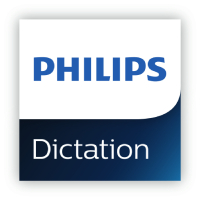 By Legal Futures Associate Philips Dictation
By Legal Futures Associate Philips Dictation
Speech recognition as a stand-alone solution offers a number of important benefits. Not least is the fact that it can significantly reduce the time it takes for professional workers to input text. It is generally acknowledged that we speak on average up to seven times faster than we type, so the production of a wide range of documents, from reports and contracts through to simple letters, is considerably faster using speech rather than the keyboard.
Stand-alone systems utilise front-end speech recognition to convert the spoken word to text. Also known as interactive speech recognition, this is the process of creating documentation that is instantaneously presented to the user on-screen in real-time.
One or other of the following approaches that can be taken to produce documents:
- The author uses a microphone and browser-based speech recognition solution to automatically create the first draft of the document, which is then sent through to an assistant for proofreading and any further processing.
- The author initially dictates an audio file which is then sent through to an assistant who uses speech recognition to transcribe it and then subsequently proofreads it. It is then forwarded on for further processing, if required.
In both approaches voice commands can be used to insert paragraphs, punctuation marks and special characters, contributing to speedy and effective speech-to-text conversion.
Some, although not all, systems support front-end speech recognition which can also be used to directly insert text into existing software applications, such as Microsoft Word, Outlook or case management systems.
So far, so good. But it is here where some of the limitations of the stand-alone approach emerge. Crucially, it does not cater particularly well for the growing requirement to work remotely or on the go, since typically there is no mobile app feature included as part of the solution.
Certain steps in the overall document production process can also prove problematic. For example, in most systems the voice recording is not stored once the text has been transcribed, so if the assistant has a query at some later point when they are proofreading the document, they are unable to go back to the original recording to check what was actually said.
In addition, a document can frequently go through a number of stages, e.g. initial draft, editing, comments, revised drafts, final version and approval (possibly by a number of people), so monitoring its overall progress can be a challenge.
The integration of speech recognition with workflow can do much to address these issues whilst building on the very significant benefits that the stand-alone solution can deliver, as we will see below.
Speech recognition plus workflow
First and foremost, it is important to understand what we mean by workflow. Essentially a workflow is a series of tasks required to be carried out in a certain order by different employees in order to complete a specific business process. Workflow software is a tool that automates the flow of these steps.
So, integrating speech recognition with workflow does everything a stand-alone system will do and much more!
Importantly, it caters for the growing adoption of hybrid and remote working, and the demand for creating, editing and verifying documents on the move.
It does this by incorporating a mobile app which is usually capable of supporting both Android and iOS devices. This enables an author to use their mobile (or a portable voice recorder) to record audio files and upload them later for automated transcription, commonly known as back-end speech recognition. Alternatively, they can use the mobile devices to create documents automatically using the speech-to-text software.
It is at this stage that the workflow element really comes into its own. For example, the workflow software can be used to:
- Set up single or multiple-step workflows to automatically route tasks through to the most appropriate member(s) of support staff.
- Assign priorities that flag urgent recordings and move them up in the transcription queue.
- Specify the date when a particular package of work needs to be completed.
- Include a sign-off feature that enables documents to be authorised remotely, allowing them to progress automatically to the next stage of the workflow irrespective of the location of the author.
- Provide a clear version control and audit trail – meaning it is possible to track the version history every time a document is changed and maintain each version along with an auditable trail of changes from the time a document is created to its final released version.
- Provide output reports that can help management to view key metrics of system usage such as volume, capacity and utilisation.
So, the addition of the workflow capability provides far greater clarity on where a document is in the overall production cycle and can highlight any specific issues or delays that may need addressing, particularly if the document is deemed to be “urgent”.
What’s more, by integrating speech recognition with workflow software, a business can automate the entire document production cycle from the initial voice recording right through to the final sign-off of the document, providing greater levels of control throughout.
The overall result can be a significantly shorter document turnaround, particularly for authors on the move. Not only can they save time in putting the original draft document together, they are also able to manage the full document workflow remotely from a mobile device.
All of which can help in providing a more responsive service to customers, or freeing up time to focus on other customer-focused activities or new opportunities.










